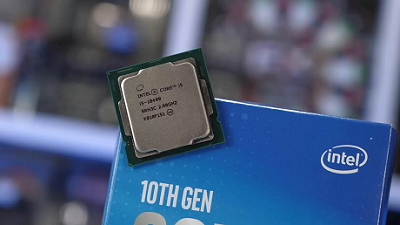|
Do you need to buy a Core i9 for gaming, and is a Core i3 sufficient for general desktop work? How about upgrading to a Core i5 if it's only $50 more, and how much faster is that going to be? Generally speaking, our CPU reviews provide more than enough data to answer those questions and then some. In addition, TechSpot's easy to follow Best CPUs guide is regularly updated, so you simply get what you need to know to make an informed buying decision. With that said, this review will serve as a great reference for those wanting to compare Intel Core i3, i5, i7, and i9 processors directly, and what you get on each jump. It’s rare for us to feature all these processors in a single review since they aim at different market segments and budgets. For example, when reviewing the Core i3-10100, none of the Core i7 or i9 processors were included, as $400+ parts aren’t usually relevant when reviewing an entry-level $100 CPU, so we opt to remove them in an effort to declutter the graphs. Having recently provided a similar overview for AMD's 3rd-gen Ryzen range, it was only logical we did the same for Intel, considering the 10th-gen CPUs have only been out for a few months. Intel lists 17 individual ‘standard power’ 10th-gen Core desktop processors, though in reality there’s just a handful of unique models. For example, there are two distinct Core i9 models, the 10900 and the 10900K, but each has an alternate version without the integrated graphics -- dubbed the 10900F and 10900KF. But let’s start from the bottom and work our way up. The 10th-gen Core i3 range is quite interesting, all models feature 4 cores and 8 threads thanks to Hyper-Threading support. The base i3-10100 model operates at a base frequency of 3.6 GHz with a max turbo of 4.3 GHz and packs a 6 MB L3 cache. Then there’s the Core i3-10300 which gets a 100 MHz frequency bump plus a larger 8 MB L3 cache. Finally, the most powerful Core i3 model available right now is the 10320, which runs at even higher clock speeds, boosting the base to 3.8 GHz and the max turbo to 4.6 GHz. To represent the Core i3 range today we'll be using the Core i3-10100. The 10th-gen Core i5 series consists of the 10400, 10400F, 10500, 10600, 10600K, and the 10600KF as shown in the table below. The six models feature 6 cores, 12 threads, and a 12MB L3 cache. The non-K models are rated with a 65-watt TDP while the unlocked K SKUs pack a 125-watt TDP. The difference between the 10400, 10500, and 10600 is 200 to 300 MHz, that’s it, and since they’re locked parts you won’t be able to change that. The 10600K and its F variant are fully unlocked, provided you’re using a Z-series motherboard, they can be overclocked. Complete details, along with images, and benchmarks can be found on OUR FORUM. Unlike Windows 10 desktop PC, every Windows laptop keyboard has special keys we know as the Function Keys or the F1, F2, …F12 keys on the top row that lead to different shortcuts to certain features or functions. But what if you don’t aren’t a frequent user of such features or functions and you just want to use them as the regular function keys? Want to use the function keys without pressing the Fn button? There’s a whole lot of things you can do with the function keys, you can change the brightness, control the volume, control the music using the dedicated media playback keys, toggle Wi-Fi and Bluetooth connection, and so on. These keys are just fine and come handy at times, however, the function keys on your Windows 10 PC comes with a specific Fn key that temporarily gives you access to the standard Fn keys such as F1, F2, …F12 keys and disables these features. What if you don’t want to press the double keys (F1, F2… keys along with the Fn key) to work with the actual F1, F2, …F12 keys? You can disable the special features that your laptop offers via the function key and simply gain access to the regular F1, F2, …F12 keys on Windows. However, altering the function keys on Windows 10 isn’t as easy as you see on Mac. Use Of The Keyboard Shotcut is a method for those who have a Windows laptop with the Fn lock key on the keyboard. The quickest way to disable the Fn key and use the standard function keys instead of the special features, no need to enter the BIOS settings for changing it. Although this shortcut is pretty much handy, not all laptops come with the Fn lock key, notice the Fn lock icon or lock/unlock symbol on the F1, F2… keys or Esc key. Once you find it, press the Fn Key + Function Lock key simultaneously to enable or disable the standard F1, F2, …F12 keys. Voila! You can now use the functions keys without pressing the Fn key. Your laptop manufacturer offers you either software for disabling the function key features or you do it through the BIOS or UEFI settings. Your laptop needs to boot into the BIOS mode or UEFI settings which can be accessed before starting the Windows. Whenever you restart your laptop or start by pressing the power button, a quick screen with a logo at the start comes by and this is where you can access the function key and the rest of the system settings. Look for the shortcut like Press F2 or F10 for BIOS settings. The shortcut isn’t the same across the manufacturers, you may press the shortcut given to your Windows laptop. In some cases, the shortcut can be F1, F9, or F12 too, but before pressing these keys, make sure you look at your laptop’s start screen carefully for the shortcut mentioned below. You can try for F2 if the screen doesn’t show at the start. Once you enter the BIOS or UEFI settings, locate to the function keys option in the system configuration or advanced settings, once you find it, enable or disable the function keys as desired. For detailed instructions navigate to OUR FORUM. Windows 10 May 2020 Update is the first of two feature-packed releases planned for this year. The new version of the operating system brought a redesigned Cortana app and the ability to make your PC password-less ...to name just a few new additions. Unfortunately, there were some unplanned changes that arrived with the update too, including users left unable to connect to printers, randomly deleting emails in Gmail, problems accessing files saved in OneDrive cloud storage, and stuttering video games. And now there's another quibble to add to the ever-growing list since the rollout of Windows 10 May 2020 Update. Spotted by Microsoft-centric blog Windows Latest, a number of users who installed the latest Patch Tuesday – a monthly bundle of bug fixes and security improvements pushed out by Microsoft – have started to notice issues with their internet connection. Windows 10 users who are impacted by the issue are being alerted by a "No Internet Access" warning message that appears within the "Network and Internet" panel in the Settings app. Bafflingly, the issue only appears to affect select internet-enabled services baked into the operating system. According to one user, while the "No Internet Access" warning appears within the Settings app, browsing the internet works without a hitch... but asking Cortana a question doesn't return an answer – only a notification that an active internet connection is required to use the digital assistant. Even though there is an active internet connection to your device, a number of apps and system features will not work if Windows 10 believes – incorrectly, in this case – that there is a problem connecting to Wi-Fi. Anecdotal evidence from the Windows Latest blog post suggests the main features impacted for users are Cortana, Microsoft Store, and Spotify. That's enough to cause users a serious headache. Thankfully, Microsoft is well aware of the issue and is actively looking into a fix. With any luck, that means we won't have to wait very long until a new update is rolled out to fix the problem. The next Patch Tuesday is scheduled on August 11, 2020, although Microsoft could rush it out to users a little earlier as long as it's ready / considered urgent enough. It's another blow for Windows 10 users who have had a rough time with the latest operating system. And as millions of people stay home to work and study due to the ongoing public health crisis, it's not an ideal time to be breaking essential features like internet connectivity, printers, and emails. (As for the video game problem, that's admittedly less essential ...but equally annoying). Keep up with all the problems Microsoft is having with bad updates by visiting OUR FORUM on a regular basis. |
Latest Articles
|


